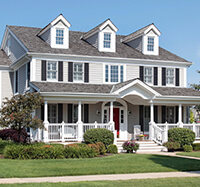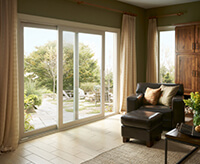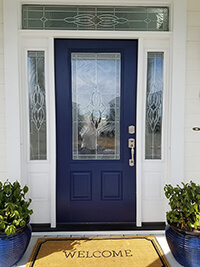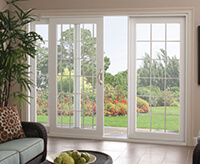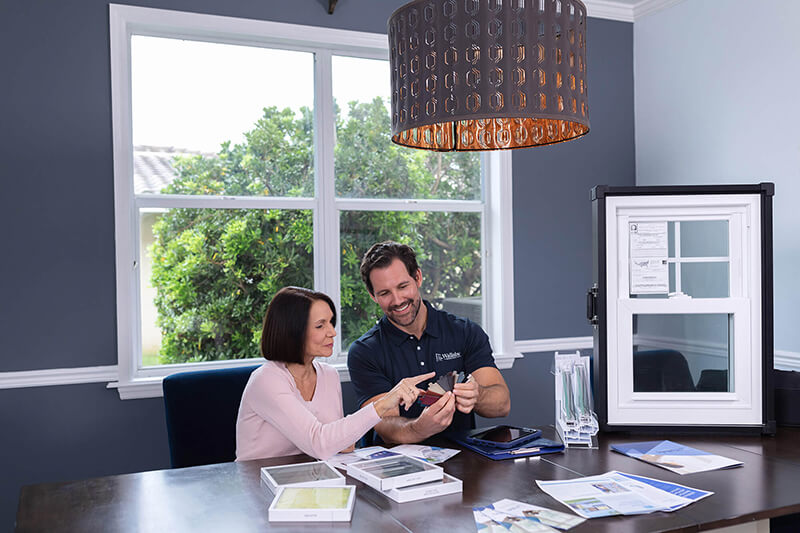
Measuring a Window for Replacement | Wallaby Windows Denver
Today we're tackling windows – those bright portals to the outside world. Replacing drafty old windows can be a game-changer for your home's comfort and energy bills. But before you jump in and order a whole new set, there's one key step: measuring those windows right.
You'd be surprised how many window replacement fails happen because of measurement mishaps! Getting those numbers precise is the key to ensuring your new windows fit like a glove and perform like champions. Don't sweat it though – we're about to break down the whole measuring process for you in a straightforward, fool-proof way.
Understanding Window Types
When it comes to replacement windows, one size does not fit all — literally and figuratively. The diversity in window types is not just a matter of appearance; it also affects functionality, energy efficiency, and how they're measured. Here's a closer look at some common window types you might encounter:
- Double-Hung Windows: Characterized by two sashes that slide vertically up and down in the frame. These are among the most common types of windows and can be found in many traditional and contemporary homes. They offer excellent ventilation options since both the top and bottom sashes can be opened.
- Casement Windows: Hinged on the side and open outward to the left or right, typically using a crank handle. Casement windows offer superior ventilation and are known for their tight seal when closed, making them highly energy efficient.
- Sliding Windows: These windows slide horizontally along a track in the window frame. Sliding windows are ideal for spaces where an outward-opening window would be impractical, such as facing a patio or walkway.
- Fixed Windows: As the name suggests, fixed windows do not open. They are designed to provide a clear view and let in light. Fixed windows are often used in combination with operable windows to offer both light and ventilation.
- Awning Windows: Similar to casement windows but hinged at the top. They open outward and upwards, making them useful for ventilation even during light rain.
- Bay and Bow Windows: These windows project outward from the home's exterior, creating a curved appearance. Bay windows typically consist of a central fixed window flanked by two angled, operable windows. Bow windows consist of four or more windows of the same size, creating a gentle arching effect.
Each window type has specific considerations for measurement, particularly concerning depth and operational clearance. For instance, casement and awning windows need enough room to open outward, which may affect the depth measurement crucial for proper installation. Similarly, the unique structure of bay and bow windows requires careful consideration of both the central and side measurements to ensure a perfect fit.
Tools You'll Need
- Tape measure
- Notepad and pen
- Level
- Ladder (for hard-to-reach windows)
Step-by-Step Guide to Measuring for Replacement Windows
Step 1: Measure the Width
- From Inside the Home: Measure the width at three points: the top, middle, and bottom of the window opening. Use your tape measure inside the frame where the window sash fits (not edge to edge of the trim or the part of the window that moves).
- Record the Smallest Measurement: Out of the three width measurements, the smallest is the one to use. This ensures the replacement window will fit in the narrowest part of the window opening, avoiding a situation where the new window is too wide to fit.
Step 2: Measure the Height
- Measure Vertically: Again, from the interior, measure the height of the window from the high point of the sill at the bottom to the top of the window opening at three points: the left side, center, and right side.
- Use the Smallest Measurement: Similar to the width, the smallest of these three height measurements is the one to record. This is because your window opening may not be perfectly square, and using the smallest measurement ensures the replacement window will fit.
Step 3: Measure the Depth
- Ignoring Obstructions: Measure the depth of the window opening by measuring from the outside edge of the window frame to the inside edge. Ensure there are no obstructions like part of the old window frame or pulleys.
- Minimum Depth Requirement: Most replacement windows require a minimum depth of about 3¼ inches from the face of the window to the nearest interior obstruction for proper installation.
Tips for Accurate Measurements
- Check for Square: Measure diagonally from corner to corner of the window opening. The two diagonal measurements should be the same. If they're not, your window opening might not be square, which could require adjustments during installation.
- Level and Plumb: Use a level to check if the sill is level (horizontal) and the window sides are plumb (vertical). If your window opening is out of square, plumb, or level, you may need to adjust the opening or customize the replacement window.
- Double-Check Your Measurements: It’s crucial to measure twice and order once. Errors in measurement can lead to costly mistakes, such as ordering windows that don’t fit.
- Consult with Professionals: If you're unsure about your measurements or the type of window you need, consider consulting with a professional. They can ensure that your measurements are accurate and advise on the best replacement windows for your home.
Ordering Your Replacement Windows
Once you have your measurements, you can order your replacement windows. Provide the width, height, and depth measurements to your supplier. Remember to specify any additional features or requirements, such as window type, glass type, frame material, and any other customization options.
Conclusion
Understanding the nuances of window types and the precision required for measurements is just the first step toward enhancing your home with the perfect replacement windows. This is where Wallaby Windows steps in to transform your window replacement project from daunting to delightful. Specializing in a wide range of window types — from double-hung and casement to sliding and fixed windows — Wallaby Windows ensures a tailored solution that meets your specific needs, preferences, and architectural style. Our team of experts is ready to guide you through every step, ensuring that your new windows are not just precisely measured and perfectly fitted but also beautifully complement your home's unique character.
Ready to elevate your home with Wallaby Windows? Visit our website or contact us today for a free consultation. Let us help you select the ideal windows that blend functionality with style, making your window replacement project a seamless success. With Wallaby Windows, you're choosing quality, efficiency, and beauty — all wrapped into one. Begin your journey to a brighter, more energy-efficient home today.
